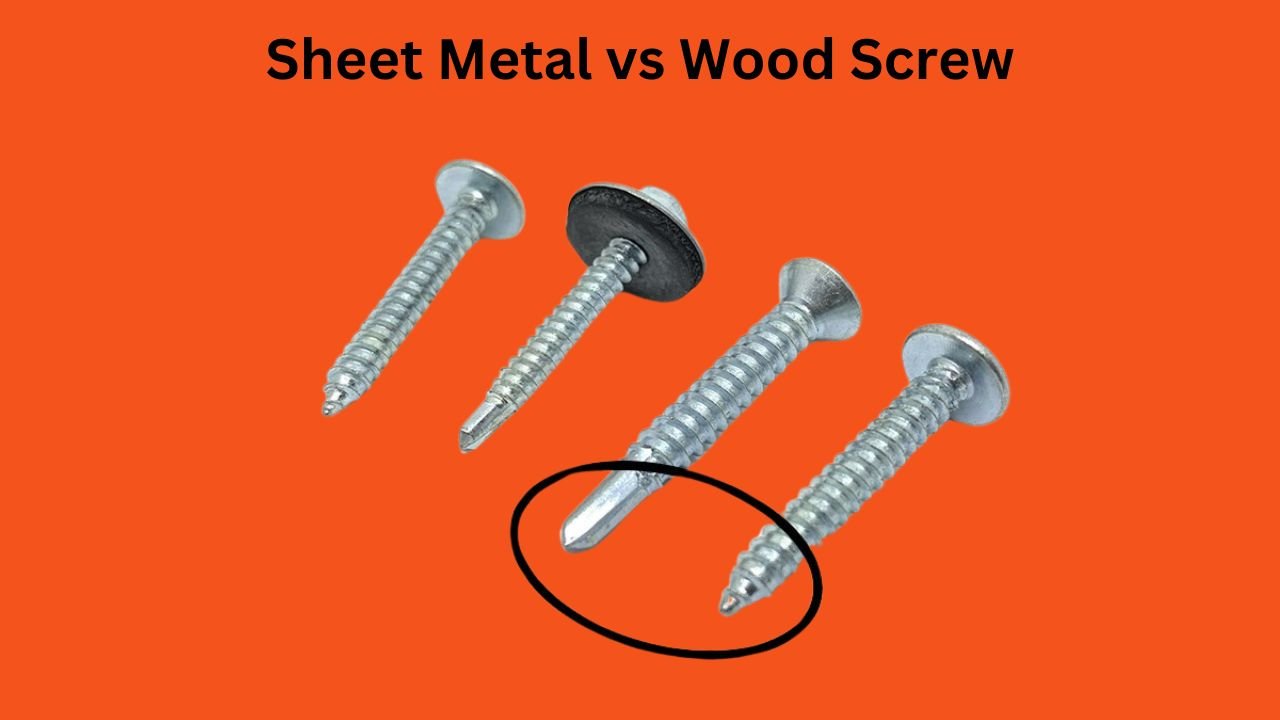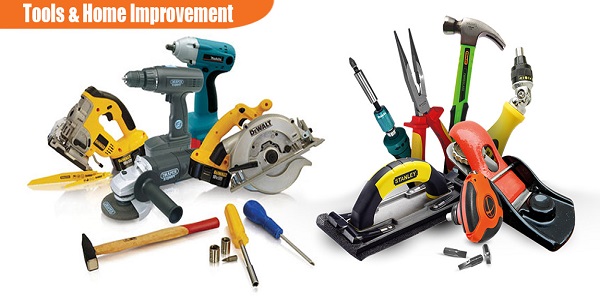Yes, you can use sheet metal screws in wood. They are versatile and can work in various materials.
However, they might not be the best choice for every wood project. Sheet metal screws have unique features. They are designed to pierce through metal, making them strong. But wood and metal have different needs. Wood is softer and requires a different approach.
Using the wrong screw can cause splitting or weak joints. Understanding when and how to use sheet metal screws in wood is important. This ensures your project remains strong and durable. In this post, we will explore the benefits, limitations, and best practices for using sheet metal screws in wood. This helps you decide if they are the right choice for your next woodworking project.
Introduction To Fasteners
Fasteners are essential components in construction and DIY projects. They hold things together, ensuring stability and durability. Whether you’re building a bookshelf or crafting a birdhouse, choosing the right fasteners is crucial for the success of your project.
Have you ever stood in a hardware store, staring at rows of screws, feeling overwhelmed? You’re not alone. Understanding fasteners can make your next project easier and more enjoyable.
Types Of Screws
Screws come in various types, each designed for specific materials and uses. Wood screws are tailored for wood projects with a sharp point that easily penetrates and grips the material.
Sheet metal screws are another type, designed to fasten metal sheets. Their threads are coarse, allowing them to cut into metal efficiently. But can they be used in wood?
Yes, sheet metal screws can be used in wood. They provide a secure hold, especially in hardwoods. However, they may not be ideal for softer woods due to their coarse threads.
Common Uses
Wood screws are commonly used for building furniture, installing cabinets, and constructing decks. Their design ensures a tight fit in wood, preventing slippage.
Sheet metal screws, on the other hand, are perfect for attaching metal panels or joining thin metal sheets. They are also useful in automotive and machinery projects.
Consider the nature of your project. Are you working with hardwood or softwood? Are aesthetics important? Your answers will guide your choice between wood screws and sheet metal screws.
Have you ever tried using sheet metal screws in a woodworking project? How did it go? Sharing your experiences can help others make informed decisions.
Next time you’re at the hardware store, look beyond the labels. Think about the material, purpose, and aesthetics of your project. Your choice of fasteners can make all the difference.

Credit: allpointsfasteners.com
Sheet Metal Screws Overview
Have you ever found yourself in a situation where you’re wondering whether sheet metal screws can be used in wood? You’re not alone. Many DIY enthusiasts and professionals often face this dilemma. Before diving into the specifics, let’s first understand what sheet metal screws are all about.
Design And Features
Sheet metal screws are unique in their design. They feature a sharp, pointed tip that allows them to penetrate materials easily. This makes them particularly effective for securing thin pieces of metal together.
These screws typically have a full-thread design. This means the threading runs from the head to the tip, ensuring a strong grip. It’s this design that gives them versatility, making them useful in various applications beyond just metal.
Unlike wood screws, which sometimes have a partially threaded shank, sheet metal screws provide uniform hold. This feature can be advantageous when you need consistent fastening. But, does this make them ideal for wood?
Material Composition
The material composition of sheet metal screws often includes stainless steel or zinc-plated steel. These materials offer durability and resistance to rust and corrosion. If you’ve ever worked in damp or outdoor environments, you know how valuable this can be.
However, the material choice might influence your decision to use them in wood. Stainless steel, for instance, is strong but can be more expensive. On the other hand, zinc-plated screws are cost-effective but may not offer the same longevity.
Consider the environment where you’ll be using these screws. Are you working on an outdoor deck or an indoor project? Choosing the right material can make a significant difference in the outcome and longevity of your project.
So, the next time you reach for a sheet metal screw, think about its design and material. Would it serve your purpose in wood? Or would you be better off with a wood screw? Your choice could impact not just your project’s success, but also how long it lasts.
Wood Screw Characteristics
Understanding the characteristics of wood screws is crucial for any DIY project. Wood screws are specially designed for fastening wood pieces together. Their unique design and functionality make them ideal for various applications. Let’s explore what sets wood screws apart.
Design Differences
Wood screws have a tapered shank. This makes them effective at pulling wood pieces tightly together. Their threads are designed to grip the wood securely. The head is typically flat or oval, allowing it to sit flush with the surface. This design prevents damage or splitting of the wood.
Common Applications
Wood screws are used in furniture assembly. They are also common in cabinetry and woodworking projects. Their ability to hold wood securely makes them useful in home repairs. From building shelves to fixing a loose chair leg, they are versatile. They provide strong, reliable connections in wooden structures.
Comparing Sheet Metal And Wood Screws
Sheet metal screws can be used in wood, though they are not specifically designed for it. They have sharp threads that grip well, making them a viable option for wood projects. However, using wood screws is often better, as they are optimized for wood’s texture and density.
Comparing sheet metal and wood screws offers insight into their specific uses. Each type of screw is crafted with distinct features. These features serve different purposes in construction and DIY projects. Understanding these differences aids in choosing the right screw for the job. Let’s delve into the thread patterns and tips of these screws.Thread Patterns
Sheet metal screws have sharp, fine threads. These threads cut into metal sheets easily. They offer grip and stability. Wood screws feature wider, deeper threads. They are designed to bite into wood fibers. This ensures a firm hold without splitting the wood. Each thread pattern is tailored for its material. Selecting the right thread ensures durability and strength in your project.Pointed Vs. Blunt Tips
Sheet metal screws often have pointed tips. These tips pierce metal surfaces smoothly. They make the initial penetration easier. Wood screws usually have blunt tips. The blunt end reduces the risk of damaging the wood. It helps to guide the screw through softer materials. The tip design is crucial in achieving a clean, efficient installation.Advantages Of Using Sheet Metal Screws In Wood
Using sheet metal screws in wood projects can offer unique advantages. These screws can sometimes outperform traditional wood screws in certain situations. Their design makes them versatile and effective. Discover how sheet metal screws can benefit your woodworking tasks below.
Cost Efficiency
Sheet metal screws are often more affordable than specialized wood screws. This cost difference can add up in large projects. Saving money on materials helps keep overall expenses down. Budget-friendly options are always a welcome choice for DIY enthusiasts.
Availability
Finding sheet metal screws is usually easier. They are available in most hardware stores. Their widespread use makes them accessible for different projects. This availability ensures you can get them quickly. No need to wait for special orders.

Credit: sheetmetalmasion.com
Potential Drawbacks
Using sheet metal screws in wood may seem convenient. But there are potential drawbacks. These issues affect the performance and longevity of your projects. Understanding these drawbacks helps in making better choices for your woodwork.
Durability Concerns
Sheet metal screws might not be as durable in wood. They are designed for metal, not wood. This can lead to faster wear and tear. Wood’s natural movements can stress the screws. This stress can cause them to become loose over time. The screws might break or bend under pressure. This compromises the structure’s stability.
Holding Power
Sheet metal screws offer limited holding power in wood. They lack the grip that wood screws provide. Their threads are not designed for wood fibers. This can result in a weak hold. Projects might not withstand weight or movement. The screws might pull out over time. This can make structures unsafe and unreliable.
Best Practices For Usage
Using sheet metal screws in wood might seem unconventional, but it can be quite effective if done properly. These screws are designed with sharp threads that can easily cut into materials, making them a viable option for certain woodworking projects. To ensure success, you need to follow best practices. This includes understanding pre-drilling techniques and proper installation methods. Let’s dive into the specifics to enhance your woodworking experience.
Pre-drilling Techniques
Pre-drilling is a crucial step when using sheet metal screws in wood. It prevents the wood from splitting and ensures a snug fit. Use a drill bit slightly smaller than the screw diameter. This helps the threads grip the wood without loosening.
Choose a drill bit that matches the screw’s core diameter. A smaller hole reduces the risk of damaging the wood. Try testing on a scrap piece first; you’ll gain confidence and see how the wood reacts. Are you worried about cracking? Pre-drilling can save you from frustration.
Proper Installation
Installing sheet metal screws into wood requires precision. Drive the screws slowly to maintain control and avoid stripping the threads. It’s tempting to rush, but patience pays off with a secure fit.
Consider using a screwdriver with a comfortable grip. This gives you better control and minimizes the chance of slipping. Ever had a screw go in crooked? Apply steady pressure and keep the screw aligned. It’s easy to prevent these mishaps with careful handling.
Think about the wood’s thickness and density. Denser wood may require more effort, so adjust your approach accordingly. Are you working with different wood types? Customize your strategy for each one to ensure a perfect installation every time.

Credit: www.youtube.com
Frequently Asked Questions
Can You Use Sheet Metal Screws As Wood Screws?
Sheet metal screws can be used in wood, but they’re not ideal. Wood screws have threads designed for gripping wood fibers. Using sheet metal screws in wood may result in less secure fastening. For best results, choose screws specifically made for wood applications.
This ensures better hold and durability.
Is There A Difference Between A Wood Screw And A Metal Screw?
Yes, there is a difference between wood screws and metal screws. Wood screws have wider threads for gripping wood fibers. Metal screws have finer threads suitable for penetrating and fastening metal surfaces. Choose the appropriate screw type based on the material you are working with for optimal results.
Can You Use Any Screw In Wood?
Not all screws are suitable for wood. Use wood screws for the best results. They have specific threading and tips designed for wood’s density. Choosing the right screw ensures durability and stability in your woodworking projects. Always match screw type and size to your specific wood type and project needs.
Can You Use Stainless Steel Screws In Wood?
Yes, stainless steel screws can be used in wood. They offer corrosion resistance and durability, ideal for outdoor projects. Choose the appropriate size and type for optimal performance. Pre-drilling holes can prevent wood splitting and ease screw insertion. Stainless steel screws ensure a long-lasting, strong connection in wooden structures.
Conclusion
Sheet metal screws can work in wood. They offer strong grip. Perfect for projects needing quick fixes. But, wood screws are better for long-term use. They are designed for wood’s natural expansion and contraction. Always check the material and screw compatibility.
This ensures durability and safety. Choose wisely based on your project’s needs. Experiment with different screws. Observe how they perform. This helps in selecting the best screw for future tasks. Remember, the right screw makes all the difference. Happy building!


